Whiteoak acorns have been falling like rain at my house. I blew off my driveway between my house and garage and within 48 hours I could not walk across it without stepping on acorns.
Whiteoak acorns are a wonder of nature. Big trees drop thousands of them each fall, but almost none will fill their destiny of producing another mature tree. Some will rot, but most will be eaten by wildlife. Without them some species would not survive.
Deer depend on them to fatten up in the fall for the lean winter months when food is scarce. Squirrels eat some on the spot but bury many more, sniffing them out during the winter when they, too, can not find other food. Birds of many species eat them with abandon when they are plentiful
Whiteoaks and acorns have played an important part of my outdoor life. I have spent hundreds of hours sitting under various trees, holding my .22 Remington semiautomatic rifle or my single shot .410, waiting on a squirrel to expose himself. When they came for dinner they became my dinner.
I have built deer stands in them or near them all my life. Their spreading lower limbs offer good anchors for a built stand. Most of the time I put my climbing stand near one in a popular or pine, giving myself a good shot at any deer that comes to feed.
When I was a kid, I read in one of my outdoor books that Indians ate acorns. I tried one, it was very bitter, and I immediately spit it out. Then I read the
Indians pounded them into meal, soaked the meal in water to remove the tannin, the chemical that produced the bitter taste, then used the meal for cooking.
Since there was always plenty of cornmeal in the cabinet in the kitchen, I never went to the trouble to try that.
Whiteoak wood makes good firewood and I have cut down hundreds on my property, usually one that had died, and split them up for firewood for my insert in my great room. The first five years I lived in my current house I heated it totally with the wood burning insert, putting a sheet over the stairwell going upstairs to keep the heat in the downstairs living area we used, and using fans in doorways to move the heat into other rooms.
I stopped doing that and lit the pilot light on my furnace when I was out of town for a tournament and Linda was home alone. She got sick and could not bring in firewood and keep a fire going. Even after that experience, most of my heat still came from the burning wood.
They say cutting wood for heating warms you seven times. When you cut it, load it, unload it, split it, stack it, carry it inside and finally when you burn it. I can attest to that, especially on warm fall days when I was doing all of the above except burning it!
I always wanted to be a “survivalists,” studying different kinds of edible natural plants I could gather. Mushrooms were one thing I avoided, but there is an amazing amount of food available most of the year if you know where to look. And game and fish provide plenty of protein if you can catch or kill it.
Although I have never tried most of them, there are many ways to preserve food for the winter when food is not available to gather. Like squirrels and deer, if you are going to survive in the wild, you have to store food for the winter or try to fatten up to make it through lean times.
Storing it is much better than trying to get enough fat stored to starve and burn it when no food is available.
We did that on the farm. We had a big walk in pantry off the garage and by this time of year there were hundreds of jars in it. Everything from string beans, tomatoes, potatoes to jams, jellies and preserves were canned ready for winter. Add in the freezer full of other vegetables and fruits and we ate good all winter.
I am listening to a book about a terrorist attack that destroys our electric grid and plunges the
US into chaos. Millions of people in cities run out of food in less than a week, and they have no idea what to do other than loot and steal what they want.
I think I am too old to survive on my own now, but I think I still could get by better than most. Very few people have a clue how to produce their own food. They think meat comes in nice Styrofoam packages with clear wrap, vegetables are clean and grouped in bins and canned goods magically appear on shelves.
If we ever decend into chaos like in the book millions would die. Could you survive on your own with out our food supply chain and heat from electricity and gas? Most could not.
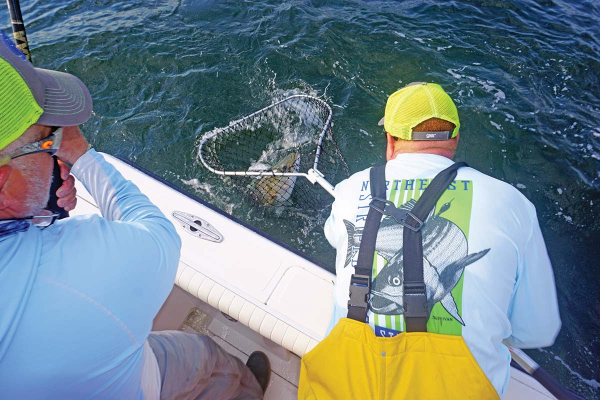 Chuck Many nets a good fish for Dave Glassberg during the spring run off the Jersey Shore during the 2020 Northeast Striped Bass Study.
Chuck Many nets a good fish for Dave Glassberg during the spring run off the Jersey Shore during the 2020 Northeast Striped Bass Study.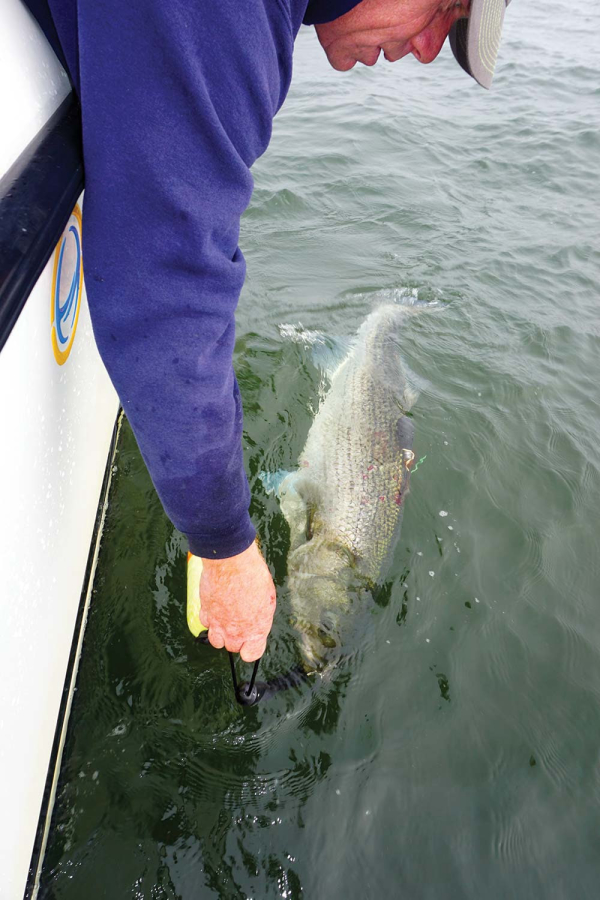 With both a MiniPSAT device and a Gray FishTag Research “streamer” tag, a 46-1/2-inch striped bass called Rona is released back in the waters off Sandy Hook for the start of her tracking adventure.So the $10,000 question we’ve all been waiting to answer with baited breath; where did Cora and Rona eventually get to, and did they follow a similar offshore path to what Freedom and Liberty did during the 2019 study?
With both a MiniPSAT device and a Gray FishTag Research “streamer” tag, a 46-1/2-inch striped bass called Rona is released back in the waters off Sandy Hook for the start of her tracking adventure.So the $10,000 question we’ve all been waiting to answer with baited breath; where did Cora and Rona eventually get to, and did they follow a similar offshore path to what Freedom and Liberty did during the 2019 study? 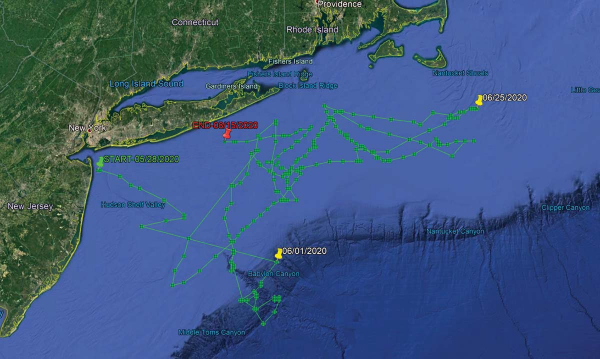 The first striper deployed with a MiniPSAT device in 2020, Rona shows a rather incredible migratory journey between May 28 and August 15.
The first striper deployed with a MiniPSAT device in 2020, Rona shows a rather incredible migratory journey between May 28 and August 15.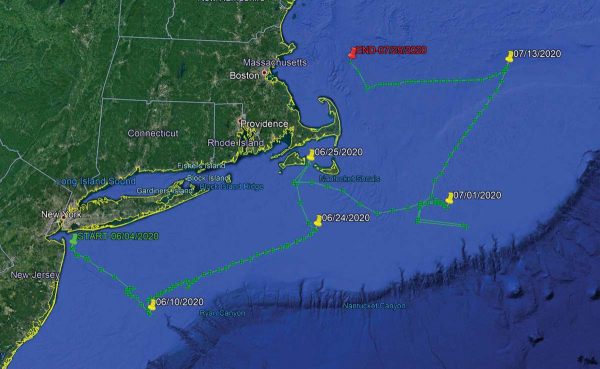 While Cora was the second fish “sat” tagged on June 3, hers was the first MiniPSAT to “ping” the Argos satellite on August 1 after coming undone prematurely on July 25.And similar to Cora which traversed darn close to the Texas Tower, data shows Rona making a quick run southwest of the Hudson tip in the area around the Triple Wrecks where yellowfin action was completely off the charts in 2020 with pelagics gorging on sand eels and keeping rods bent through early fall.
While Cora was the second fish “sat” tagged on June 3, hers was the first MiniPSAT to “ping” the Argos satellite on August 1 after coming undone prematurely on July 25.And similar to Cora which traversed darn close to the Texas Tower, data shows Rona making a quick run southwest of the Hudson tip in the area around the Triple Wrecks where yellowfin action was completely off the charts in 2020 with pelagics gorging on sand eels and keeping rods bent through early fall. 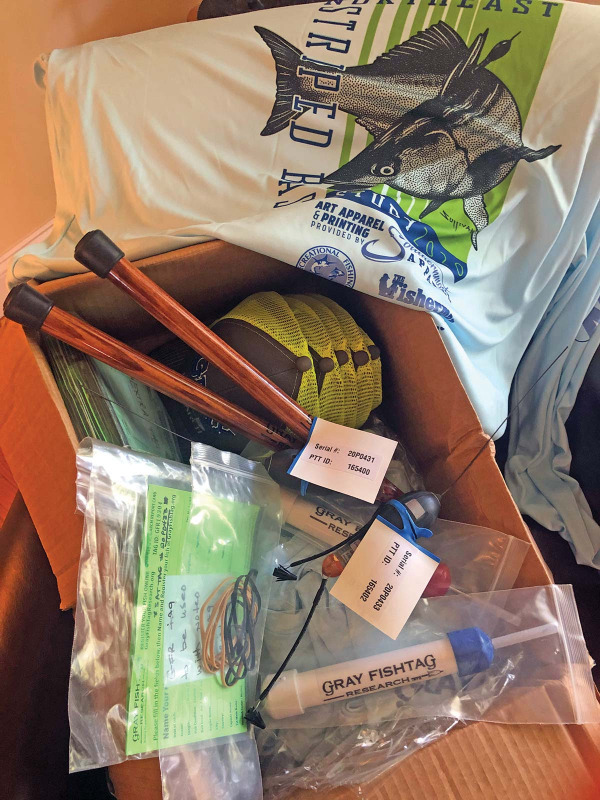 While a global pandemic impacted scheduling of the 2020 Northeast Striped Bass Study, the first batch of tagging gear arrived just in time for the Memorial Day weekend.“It is our team’s mission in our tagging work to always keep the data collected as open access to all,” Dobbelaer said of the team’s research, adding
While a global pandemic impacted scheduling of the 2020 Northeast Striped Bass Study, the first batch of tagging gear arrived just in time for the Memorial Day weekend.“It is our team’s mission in our tagging work to always keep the data collected as open access to all,” Dobbelaer said of the team’s research, adding 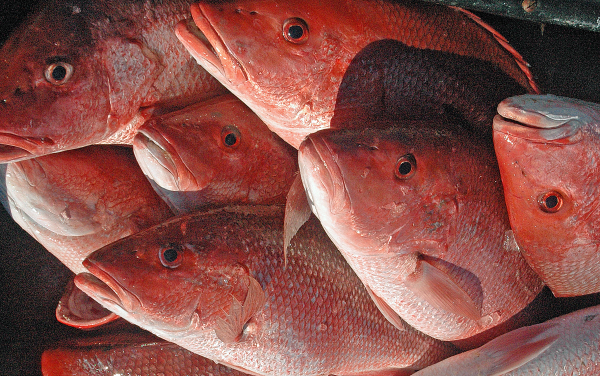
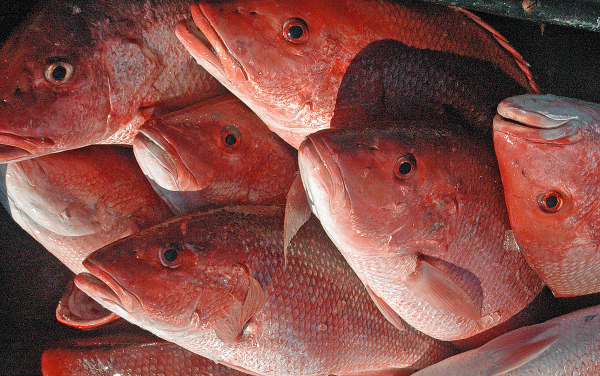 By DAVID RAINER
By DAVID RAINER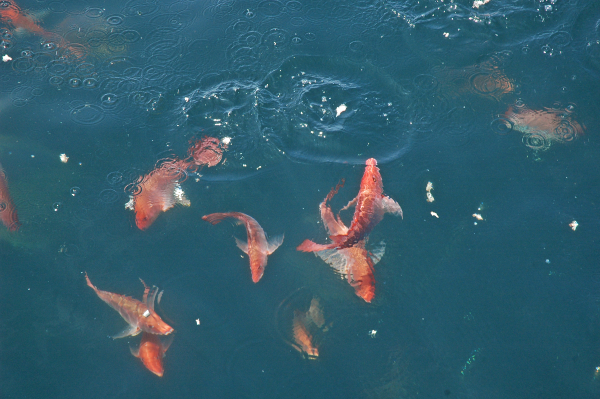 “This time of year, we will continue to have challenges with the weather,” he said. “People will have multiple conflicts with their schedules based on kids being in school and hunting seasons. We know the weekend effort won’t be like summertime weekends. We will keep up with the harvest through Snapper Check and post it on our webpage (
“This time of year, we will continue to have challenges with the weather,” he said. “People will have multiple conflicts with their schedules based on kids being in school and hunting seasons. We know the weekend effort won’t be like summertime weekends. We will keep up with the harvest through Snapper Check and post it on our webpage (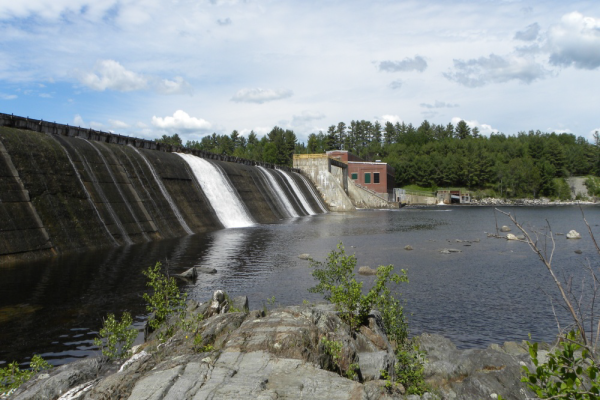 Weldon Dam on the Penobscot River in Maine.
Weldon Dam on the Penobscot River in Maine. 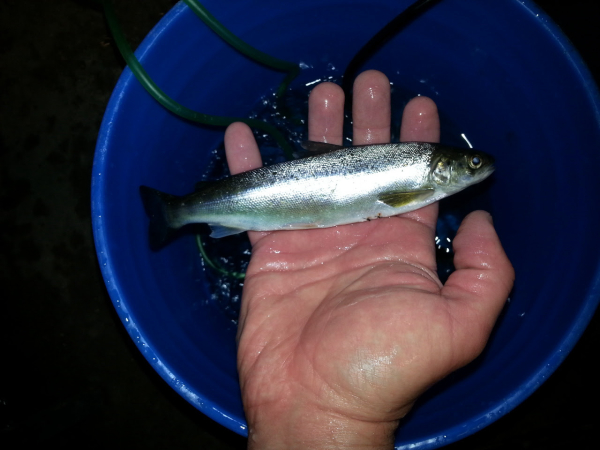 Hatchery salmon smolt
Hatchery salmon smolt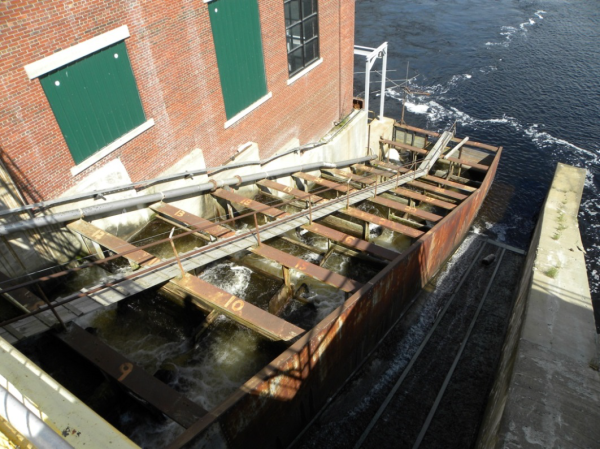 Fish passage at Weldon Dam on the Penobscot River in Maine
Fish passage at Weldon Dam on the Penobscot River in Maine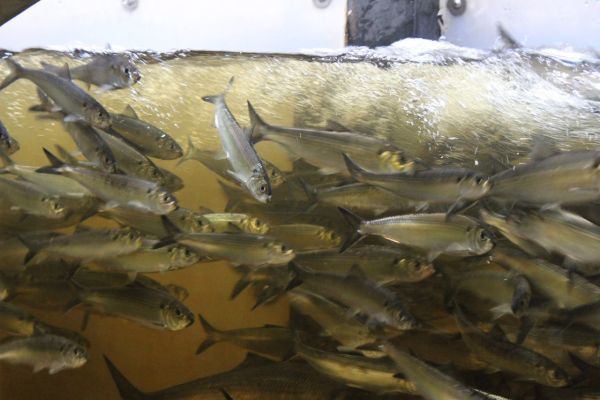 Viewing box at a dam fish passage as salmon migrate upstream .
Viewing box at a dam fish passage as salmon migrate upstream .